
The 100 Islands Philippines, nestled within the azure waters of the Philippines, stand as a testament to the country’s natural splendor and allure.
This archipelago, located off the coast of Pangasinan province, is renowned for its breathtaking landscapes, pristine beaches, and diverse marine life.
Comprising 123 stunning islets and isles during low tide and approximately 124 at high tide, the 100 Islands form an enchanting marine sanctuary that beckons travelers from around the globe.
Each island boasts its own unique charm, ranging from secluded coves to towering limestone cliffs adorned with lush greenery.
The 100 Islands hold immense cultural and ecological significance in the Philippines.
Not only do they serve as a haven for biodiversity, but they also represent a source of pride for Filipinos, symbolizing the country’s rich natural heritage and maritime legacy.
In this comprehensive guide, we will delve into the wonders of the 100 Islands Philippines, offering insights into its geographical and historical background, biodiversity, tourism attractions, cultural experiences, and practical tips for visitors.
From exhilarating adventure activities to serene moments of relaxation, we’ll explore everything you need to know to make the most of your journey to this captivating archipelago.
Geographical and Historical Background
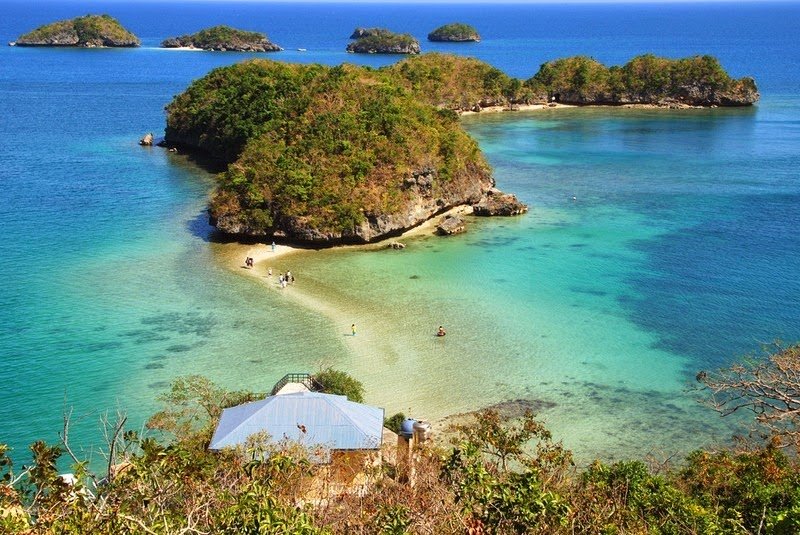
The 100 Islands Philippines encompass not just a picturesque destination but also a treasure trove of geological wonders and historical narratives that have shaped the region’s identity over the centuries.
Situated off the coast of Alaminos in the province of Pangasinan, the 100 Islands form part of the Lingayen Gulf in the western seaboard of Luzon, the largest island in the Philippines.
Accessible by boat from Lucap Wharf, these scattered islets dot the emerald waters of the South China Sea, creating a mesmerizing vista that captivates visitors upon arrival.
The formation of the 100 Islands can be traced back millions of years ago, a result of geological processes such as erosion, uplift, and the dissolution of limestone formations.
These limestone outcrops, sculpted by the relentless forces of nature, stand as towering sentinels amidst the sea, adorned with verdant vegetation and intricate rock formations.
Geologically, the islands hold immense significance, serving as a testament to the dynamic interplay between land and sea, while providing valuable insights into the earth’s geological history and processes.
Beyond their geological allure, the 100 Islands bear profound historical and cultural significance in the Philippines.
Indigenous communities have long revered these islands as sacred spaces, imbued with mythical tales and ancestral lore passed down through generations.
Throughout history, the islands have witnessed the ebb and flow of maritime trade, serving as navigational landmarks for seafarers and explorers traversing the archipelago.
From Spanish galleons to modern-day vessels, the waters surrounding the 100 Islands have been traversed by ships carrying goods, people, and stories from distant shores.
Moreover, the islands hold cultural significance as symbols of resilience and unity, embodying the spirit of the Filipino people in the face of natural calamities and historical upheavals.
Biodiversity and Ecology
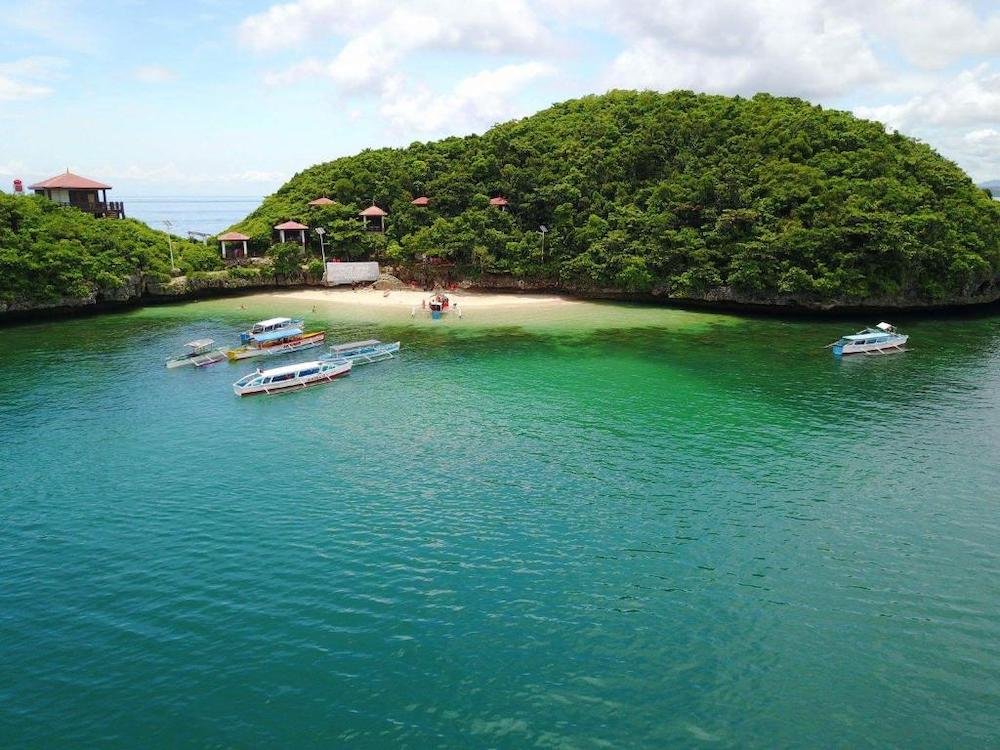
The 100 Islands Philippines boast a rich tapestry of biodiversity, encompassing diverse marine and terrestrial ecosystems that support a myriad of flora and fauna species.
Let’s delve into the intricate web of life that thrives within these pristine habitats.
The 100 Islands harbor a mosaic of ecosystems, ranging from vibrant coral reefs teeming with marine life to lush forests brimming with biodiversity.
Beneath the crystal-clear waters, coral gardens flourish, providing habitat for a kaleidoscope of fish, crustaceans, and other marine organisms.
Along the shorelines, mangrove forests and seagrass beds serve as vital nurseries and breeding grounds for marine species, contributing to the overall health of coastal ecosystems.
On land, the islands are adorned with verdant foliage, including towering hardwood trees, endemic plant species, and vibrant tropical flowers.
Dense forests and limestone cliffs provide sanctuary for diverse wildlife, from colorful birds and butterflies to elusive mammals and reptiles.
The 100 Islands Philippines harbor a treasure trove of endemic and endangered species found nowhere else on Earth.
Among the remarkable fauna species are the Philippine mouse-deer, the Palawan hornbill, and the Tabon scrubfowl, each adapted to the island’s unique habitats.
Beneath the waves, coral reefs pulsate with life, hosting a dazzling array of coral species, reef fish, and invertebrates.
The islands’ flora is equally captivating, with rare orchids, pitcher plants, and ferns adorning the forest floor.
Endemic tree species such as the Narra and the Malabayabas stand as sentinels of the islands’ ecological heritage, their sprawling canopies providing shelter for a multitude of life forms.
Despite their ecological importance, the 100 Islands face mounting threats from human activities, including overfishing, pollution, and habitat destruction.
Recognizing the need for conservation, local authorities and environmental organizations have launched initiatives to protect and preserve these fragile ecosystems.
Conservation efforts include the establishment of marine protected areas, the implementation of sustainable fishing practices, and the promotion of eco-tourism activities that minimize environmental impact.
Community engagement and education play a crucial role in fostering stewardship and raising awareness about the importance of biodiversity conservation.
Challenges remain, however, as rapid urbanization and industrial development place increasing pressure on the islands’ fragile ecosystems.
Addressing these challenges requires collaborative action at local, national, and international levels, guided by principles of sustainability and environmental stewardship.
Tourism and Attractions

The 100 Islands Philippines beckon travelers with their idyllic shores, pristine waters, and abundance of natural wonders.
From thrilling adventures to tranquil moments of relaxation, there’s something for every type of traveler to discover amidst these enchanting isles.
Popular Tourist Activities and Attractions:
- Island Hopping: Embark on an exhilarating island-hopping adventure to explore the diverse landscapes and hidden gems scattered across the archipelago. From snorkeling in vibrant coral gardens to sunbathing on secluded beaches, each island offers a unique experience waiting to be discovered.
- Snorkeling and Diving: Dive into the crystal-clear waters surrounding the islands and discover a kaleidoscope of marine life beneath the surface. Snorkeling and diving enthusiasts will delight in exploring vibrant coral reefs, encountering colorful fish, sea turtles, and other fascinating marine creatures.
- Kayaking and Paddleboarding: Glide through tranquil lagoons and pristine coves aboard a kayak or paddleboard, immersing yourself in the serenity of nature while admiring the breathtaking scenery that surrounds you.
- Rock Climbing and Cliff Jumping: For adrenaline junkies, the towering limestone cliffs of the 100 Islands offer an exhilarating challenge. Test your climbing skills as you ascend sheer rock faces or experience an adrenaline rush with cliff jumping into the crystal-clear waters below.
Numerous tour operators offer island hopping tours and packages tailored to suit every traveler’s preferences and budget.
Whether you prefer a leisurely cruise aboard a traditional banca boat or a private tour with customizable itineraries, there are options to cater to all needs.
Guided tours typically include visits to popular islands such as Governor’s Island, Quezon Island, and Children’s Island, each offering its own unique attractions and activities.
Experienced guides provide insights into the islands’ history, ecology, and cultural significance, enhancing the overall experience for visitors.
Accommodation options near the 100 Islands range from budget-friendly guesthouses and homestays to luxury resorts and beachfront villas.
Visitors can choose from a variety of accommodations located in Alaminos City and neighboring towns, offering convenient access to the islands and other attractions in the area.
For those seeking a closer connection with nature, camping facilities are available on select islands, allowing travelers to spend a night under the stars surrounded by the beauty of the natural environment.
Basic amenities such as restroom facilities and picnic areas are provided to ensure a comfortable and enjoyable camping experience.
Adventure and Recreation

Embark on a thrilling adventure amidst the natural wonders of the 100 Islands Philippines, where a myriad of exhilarating activities await adrenaline seekers and nature enthusiasts alike.
Water Sports and Activities:
- Scuba Diving: Explore the vibrant underwater world teeming with marine life as you dive into the crystal-clear waters surrounding the islands. Dive sites offer diverse ecosystems, including coral reefs, underwater caves, and vibrant marine biodiversity waiting to be discovered.
- Snorkeling: Grab your snorkeling gear and immerse yourself in the colorful world beneath the waves. Snorkeling spots abound with tropical fish, colorful corals, and other fascinating marine creatures, providing an unforgettable underwater experience for snorkelers of all skill levels.
- Jet Skiing and Parasailing: Feel the thrill of speed and adrenaline with jet skiing or soar high above the azure waters with parasailing adventures. Whether you’re racing across the waves or enjoying panoramic views from above, water sports enthusiasts are sure to find excitement and adventure.
- Banana Boating and Kayaking: Share laughter and fun with friends and family aboard a banana boat or paddle your way through tranquil lagoons and hidden coves on a kayak adventure. These water activities offer a unique perspective of the islands’ stunning landscapes and scenic coastline.
Hiking Trails and Viewpoints:
- Governor’s Island Viewpoint: Ascend to the summit of Governor’s Island and marvel at breathtaking panoramic views of the surrounding islands and azure waters stretching to the horizon. The island’s vantage points offer unparalleled vistas, perfect for capturing stunning photographs and creating lasting memories.
- Quezon Island Nature Trails: Explore the natural beauty of Quezon Island through scenic hiking trails that wind through lush forests, limestone formations, and hidden coves. Along the way, encounter diverse flora and fauna species and discover hidden gems waiting to be uncovered.
- Marcos Island Caves: Venture into the depths of Marcos Island and explore its mysterious limestone caves, adorned with stunning rock formations and ancient stalactites and stalagmites. Guided cave tours provide insights into the island’s geological history and cultural significance.
Camping and Overnight Stays:
Experience the magic of the 100 Islands under the stars with camping and overnight stays on select islands.
Set up camp on designated camping grounds and fall asleep to the gentle sound of waves lapping against the shore, surrounded by the tranquility of nature.
Basic amenities such as restroom facilities, picnic areas, and camping equipment rental services are available to ensure a comfortable and memorable camping experience for visitors.
Whether you’re roasting marshmallows around a campfire or stargazing beneath the night sky, camping on the 100 Islands offers a unique opportunity to reconnect with the natural world and create cherished memories that last a lifetime.
Cultural and Culinary Experiences
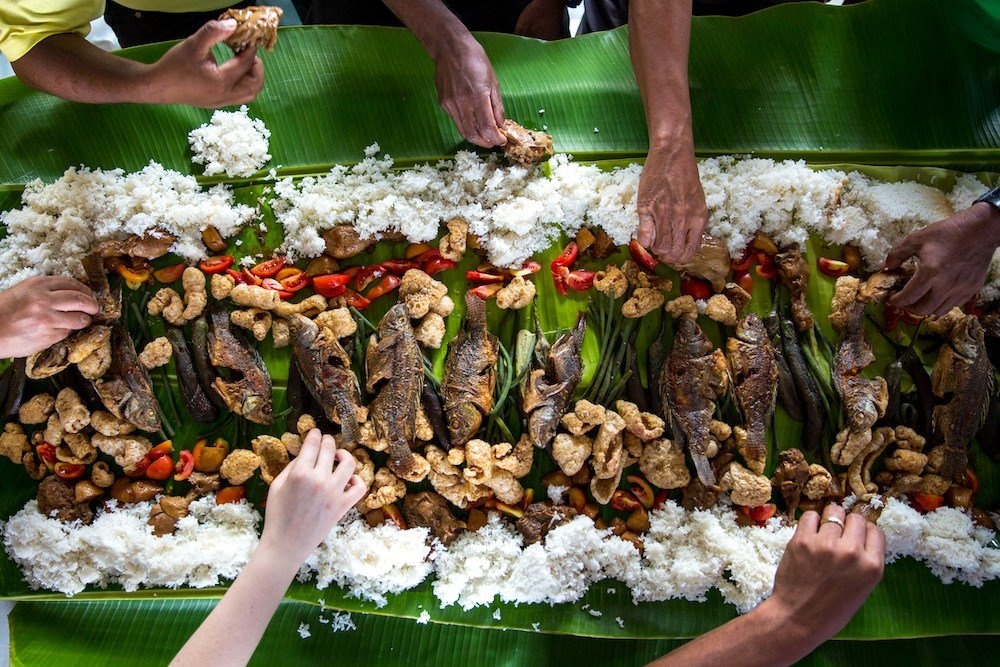
Beyond its natural beauty, the 100 Islands Philippines offer a rich tapestry of cultural traditions and culinary delights that reflect the vibrant heritage of the region.
Immerse yourself in the colorful tapestry of local life and indulge in the flavors of authentic Filipino cuisine.
Local Traditions and Cultural Events:
- Festivals and Celebrations: Experience the vibrancy of Filipino culture through festivals and celebrations that showcase the region’s rich heritage and traditions. From colorful street parades to traditional music and dance performances, cultural events offer a glimpse into the heart and soul of the Filipino people.
- Barrio Fiesta: Join local communities in celebrating the annual Barrio Fiesta, a festive occasion marked by music, dance, and feasting. Sample traditional delicacies, participate in games and activities, and immerse yourself in the warm hospitality of Filipino hospitality.
- Cultural Workshops and Demonstrations: Engage in hands-on cultural workshops and demonstrations led by local artisans and craftsmen. Learn traditional crafts such as weaving, pottery, and bamboo craft, and gain insight into the time-honored techniques passed down through generations.
Cuisine and Food Specialties of the Region:
- Seafood Delicacies: Indulge in an array of seafood delicacies fresh from the waters surrounding the 100 Islands. From grilled fish and prawns to crispy squid and shellfish, seafood lovers are in for a culinary treat that tantalizes the taste buds.
- Pangasinan’s Famous Dishes: Sample Pangasinan’s famous dishes, renowned for their bold flavors and unique culinary traditions. Don’t miss the chance to savor specialties such as “paksiw na bangus” (milkfish stewed in vinegar), “pigar-pigar” (stir-fried beef), and “bagoong” (fermented shrimp paste) served with green mangoes.
- Street Food and Market Fare: Explore bustling markets and street food stalls brimming with an array of delectable treats and local delicacies. From savory “empanadas” and “okoy” (shrimp fritters) to sweet “bibingka” (rice cake) and “puto” (steamed rice cakes), there’s something to satisfy every craving.
Interaction with Local Communities and Artisans:
- Community Immersion: Engage with local communities and artisans to gain insight into their way of life, traditions, and cultural practices. Participate in community-led tours, homestays, and cultural exchanges that foster meaningful connections and mutual understanding.
- Artisanal Crafts and Souvenirs: Support local artisans and craftsmen by purchasing handmade souvenirs and artisanal crafts that showcase the region’s cultural heritage. From intricately woven textiles to hand-carved woodwork and pottery, each piece tells a story of Filipino craftsmanship and creativity.
- Cultural Performances: Attend cultural performances and demonstrations that showcase the rich tapestry of Filipino arts and traditions. From traditional music and dance to theatrical performances and storytelling, cultural events provide an immersive glimpse into the vibrant cultural landscape of the Philippines.
Practical Tips for Visitors

Make the most of your journey to the 100 Islands Philippines with these practical tips to enhance your travel experience and ensure a memorable adventure amidst the stunning landscapes and vibrant culture of the region.
Best Time to Visit the 100 Islands:
The best time to visit the 100 Islands Philippines is during the dry season, which typically extends from November to April.
During this period, the weather is generally sunny and dry, perfect for outdoor activities such as island hopping, snorkeling, and hiking.
Be sure to plan your trip well in advance to avoid peak tourist seasons and secure accommodations and tours.
Transportation Options to Reach the Islands:
- By Land: Travelers can reach the 100 Islands by land from major cities such as Manila and Baguio via private car, bus, or shuttle services. The journey typically takes around 4-6 hours, depending on the route and traffic conditions.
- By Air and Sea: Alternatively, visitors can fly to nearby airports such as Clark International Airport or Ninoy Aquino International Airport in Manila and then take a bus or private transportation to reach the coastal town of Alaminos, the gateway to the 100 Islands.
Safety Guidelines and Regulations for Tourists:
- Stay Hydrated: The tropical climate of the Philippines can be hot and humid, so remember to stay hydrated by drinking plenty of water throughout the day.
- Sun Protection: Protect yourself from the sun’s harmful rays by wearing sunscreen, a wide-brimmed hat, and sunglasses, especially during outdoor activities and island excursions.
- Respect Wildlife and Environment: Help preserve the natural beauty of the 100 Islands by practicing responsible tourism. Avoid disturbing wildlife, refrain from littering, and follow designated trails and paths to minimize environmental impact.
Packing Essentials and Recommended Gear:
- Swimwear and Beach Essentials: Pack swimwear, towels, and beach essentials such as sunscreen, sunglasses, and a beach hat for sun protection.
- Comfortable Footwear: Bring sturdy and comfortable footwear suitable for hiking, walking on uneven terrain, and exploring rocky shores.
- Waterproof Bag or Dry Bag: Keep your belongings dry and protected during island hopping tours by using a waterproof bag or dry bag to store cameras, smartphones, and other electronic devices.
- Snorkeling Gear: If you plan to snorkel, consider bringing your own snorkeling gear, including a mask, snorkel, and fins, for a more comfortable and enjoyable underwater experience.
- Lightweight Clothing: Pack lightweight and breathable clothing suitable for warm weather, including shorts, T-shirts, and comfortable walking attire.
By following these practical tips and guidelines, you can make the most of your visit to the 100 Islands Philippines and create unforgettable memories amidst the natural beauty and cultural richness of this enchanting archipelago.
Environmental Conservation and Sustainable Tourism
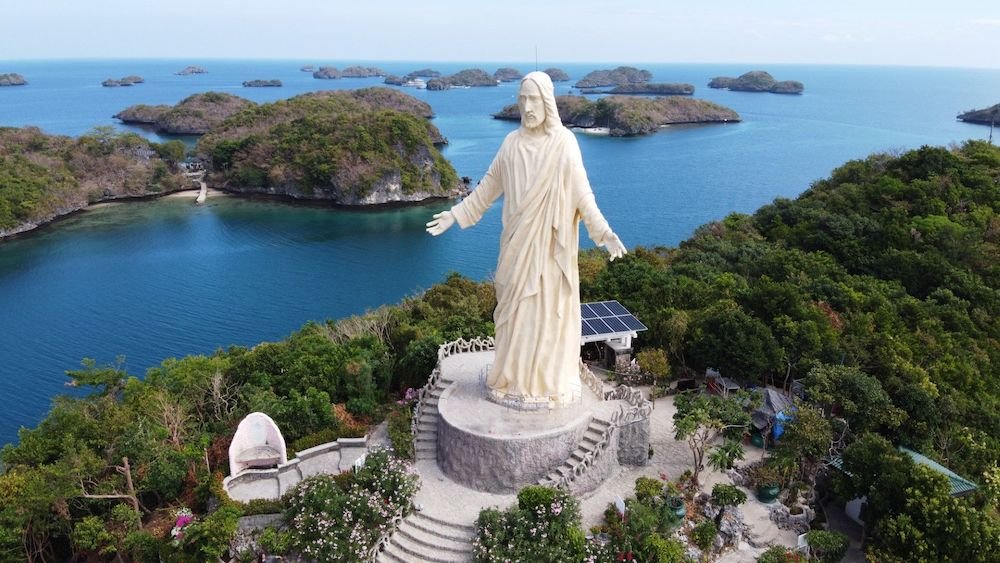
Preserving the natural beauty and ecological integrity of the 100 Islands Philippines is paramount to ensuring the long-term sustainability of this precious natural treasure.
By embracing responsible tourism practices and supporting conservation initiatives, visitors can play a vital role in safeguarding the environment for future generations to enjoy.
Importance of Responsible Tourism Practices:
Responsible tourism practices are essential for minimizing negative impacts on the environment, local communities, and cultural heritage sites.
By adopting sustainable travel habits and respecting natural ecosystems, visitors can help preserve the fragile balance of the 100 Islands’ ecosystems and contribute to the well-being of the region.
Initiatives for Preserving the Natural Environment:
- Marine Protected Areas: The establishment of marine protected areas (MPAs) helps safeguard critical habitats, conserve biodiversity, and regulate human activities such as fishing and tourism within designated zones. MPAs promote sustainable fishing practices, protect vulnerable species, and mitigate the impacts of overfishing and habitat degradation.
- Habitat Restoration: Efforts to restore and rehabilitate degraded habitats within the 100 Islands aim to enhance ecosystem resilience and promote the recovery of native flora and fauna species. Habitat restoration projects may include reforestation, mangrove planting, and coral reef rehabilitation initiatives guided by scientific research and community involvement.
- Waste Management and Pollution Control: Implementing effective waste management and pollution control measures is crucial for mitigating the adverse effects of littering, pollution, and plastic waste on marine and terrestrial ecosystems. Educational campaigns, beach clean-up drives, and recycling initiatives raise awareness about the importance of waste reduction and environmental stewardship among tourists and local communities.
Ways Tourists Can Contribute to Conservation Efforts:
- Reduce, Reuse, Recycle: Practice responsible waste management by reducing single-use plastics, recycling materials, and disposing of trash in designated bins. Carry reusable water bottles, bags, and containers to minimize plastic waste and environmental pollution.
- Respect Wildlife and Natural Habitats: Observe wildlife from a safe distance, refrain from feeding or touching animals, and avoid disturbing nesting sites or sensitive habitats. Follow designated trails and respect protected areas to minimize habitat disturbance and preserve biodiversity.
- Support Local Conservation Initiatives: Contribute to conservation efforts by supporting local organizations, community-based eco-tourism initiatives, and environmental projects that promote sustainable development and habitat conservation in the 100 Islands Philippines.
- Choose Sustainable Tour Operators: Select eco-friendly tour operators and accommodations that prioritize sustainable practices, environmental protection, and cultural preservation. Choose tours and activities that adhere to responsible tourism guidelines and prioritize the well-being of local communities and natural ecosystems.
By embracing responsible tourism practices and supporting conservation initiatives, visitors can become stewards of the environment and champions for sustainable development in the 100 Islands Philippines.
Together, we can protect and preserve this natural paradise for future generations to cherish and enjoy.
Conclusion
As we conclude our exploration of the 100 Islands Philippines, we are left in awe of the natural beauty, cultural richness, and ecological diversity that define this enchanting archipelago.
From pristine beaches and turquoise waters to lush forests and towering limestone cliffs, the 100 Islands beckon travelers with their irresistible charm and boundless wonders.
Throughout our journey, we have delved into the geographical and historical background of the 100 Islands, learned about its rich biodiversity and ecological significance, and discovered a wealth of tourism attractions and cultural experiences waiting to be explored.
From thrilling adventures and water sports to cultural traditions and culinary delights, the 100 Islands offer something for every traveler to enjoy and cherish.
We extend a heartfelt invitation to our readers to embark on their own adventure to the 100 Islands Philippines and immerse themselves in the magic of this tropical paradise.
Whether you seek adrenaline-pumping activities, tranquil moments of relaxation, or cultural immersion experiences, the 100 Islands promise an unforgettable journey filled with discovery, wonder, and adventure.
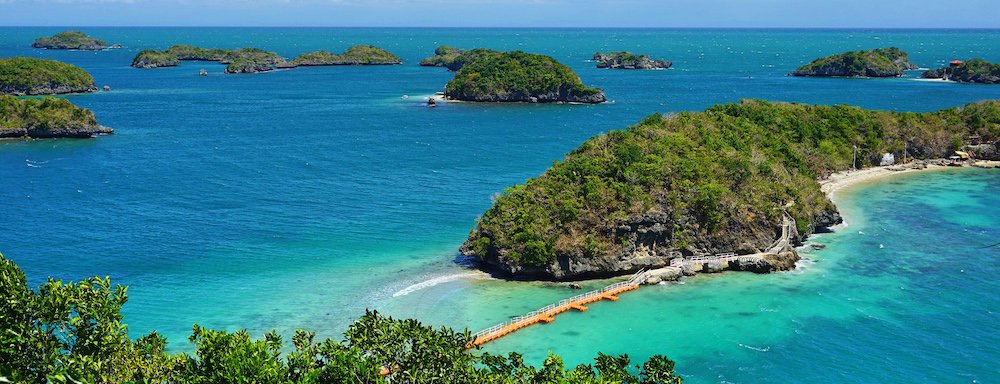
FAQ’s About 100 Islands Philippines:
Why is Hundred Islands famous?
The Hundred Islands in the Philippines are famous for their stunning natural beauty, comprising over 120 limestone islands scattered across the Lingayen Gulf.
Each island boasts unique rock formations, pristine beaches, and vibrant marine life, making it a haven for tourists and nature enthusiasts.
The islands are renowned for activities such as island hopping, snorkeling, diving, and exploring caves, offering visitors a myriad of opportunities to immerse themselves in the wonders of nature.
Is Hundred Islands worth it?
Absolutely! The Hundred Islands is undoubtedly worth a visit for anyone seeking adventure, relaxation, and natural beauty.
With its breathtaking landscapes, crystal-clear waters, and diverse marine ecosystems, the archipelago offers endless opportunities for exploration and discovery.
Whether you’re snorkeling amidst colorful coral reefs, hiking to panoramic viewpoints, or simply basking in the sun on a secluded beach, the Hundred Islands promise an unforgettable experience that will leave you in awe of its unparalleled beauty.
Can you stay overnight at Hundred Islands?
Yes, you can stay overnight at Hundred Islands. There are camping facilities available on some of the islands, allowing visitors to spend the night under the stars amidst the tranquility of nature.
Additionally, there are accommodations available in nearby towns such as Alaminos City, offering a range of options from budget-friendly guesthouses to beachfront resorts.
Whether you choose to camp under the stars or stay in a comfortable hotel, spending the night at Hundred Islands allows you to fully immerse yourself in the beauty of this enchanting archipelago.
How do I get to the Hundred Islands Philippines?
To get to the Hundred Islands Philippines, you can travel by land or air to the province of Pangasinan, where the islands are located.
If you’re coming from Manila, you can take a bus or drive approximately 4-6 hours to reach Alaminos City, the gateway to the Hundred Islands.
From Alaminos City, you can ride a boat from Lucap Wharf to access the islands.
Alternatively, you can fly to nearby airports such as Clark International Airport or Ninoy Aquino International Airport in Manila and then take a bus or private transportation to reach Alaminos City.
Once there, you can arrange boat tours and island hopping excursions to explore the beauty of the Hundred Islands.





